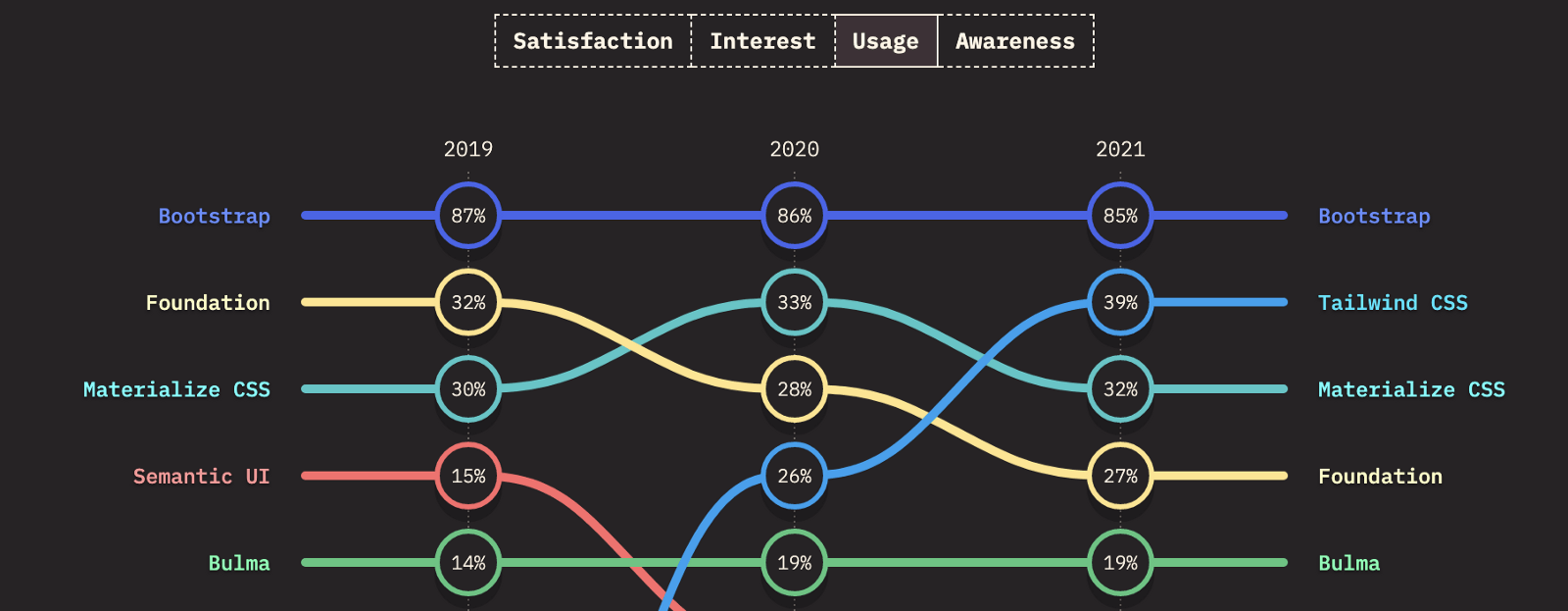Blitz News Digest
Stay updated with the latest trends and insights.
Frameworks that Style: The Hidden Heroes of Modern Web Design
Discover the unsung frameworks transforming web design—unlock modern styling secrets that elevate your sites to new heights!
How CSS Frameworks Transform Web Design: A Deep Dive
CSS frameworks have revolutionized the world of web design by providing a structured foundation that streamlines the development process. By leveraging a pre-defined set of styles, components, and grid systems, developers can create responsive and visually appealing websites more efficiently. This transformation not only accelerates the coding process but also ensures consistency across different pages and applications. In today's fast-paced digital landscape, where user experience is paramount, the adoption of CSS frameworks has become a necessity for developers aiming to produce high-quality web solutions.
Moreover, CSS frameworks typically come equipped with a variety of pre-styled components, such as buttons, navigation bars, and forms, which can significantly reduce the time spent on UI design. With this level of standardization, teams can collaborate more effectively, as the design language becomes uniform across different sections of a project. Additionally, many frameworks include responsive designs out of the box, allowing for seamless adaptations to various screen sizes. As web technology continues to evolve, understanding the impact of CSS frameworks on design practices is crucial for any developer looking to enhance their skill set.

Top 5 CSS Frameworks Every Web Designer Should Know
As a web designer, choosing the right CSS framework can significantly enhance your workflow and productivity. In this article, we will explore the Top 5 CSS Frameworks Every Web Designer Should Know, each offering unique features and benefits that cater to different design needs. From responsive layouts to pre-built components, these frameworks streamline the design process, allowing you to focus on creativity while maintaining consistency and functionality.
- Bootstrap - A pioneer in the world of CSS frameworks, Bootstrap provides a comprehensive set of design tools and responsive grid systems.
- Tailwind CSS - Known for its utility-first approach, Tailwind CSS allows for rapid customization and creates unique designs without the bloat.
- Foundation - Developed by ZURB, Foundation is robust and adaptable, catering to both complex layouts and mobile-first designs.
- Bulma - This modern framework is entirely CSS-based and offers a clean and simple syntax, making it perfect for beginners.
- Materialize - Based on Google's Material Design, this framework helps you create visually appealing and user-friendly applications.
The Evolution of CSS Frameworks: What’s Next for Web Design?
The evolution of CSS frameworks has transformed the landscape of web design, making it easier for developers to create responsive and visually appealing websites. Starting from the basic frameworks like Bootstrap, which introduced a grid system and pre-built components, to more modern solutions such as Tailwind CSS, which emphasizes a utility-first approach, the advancements have been remarkable. These frameworks not only streamline the design process but also ensure consistency across various platforms and devices. As web design continues to evolve, the need for modular, customizable options that enhance user experience is more critical than ever.
Looking forward, the next wave of CSS frameworks is likely to be characterized by increased integration with JavaScript frameworks like React and Vue.js. These innovations will facilitate even more dynamic and interactive web applications, where CSS can be seamlessly combined with components for a more fluid design experience. Furthermore, the adoption of design systems that promote collaboration between developers and designers is expected to rise, leading to a more cohesive workflow. As the demand for faster and more efficient web designs grows, understanding the evolution of CSS frameworks will be essential for staying ahead in the competitive landscape of web design.